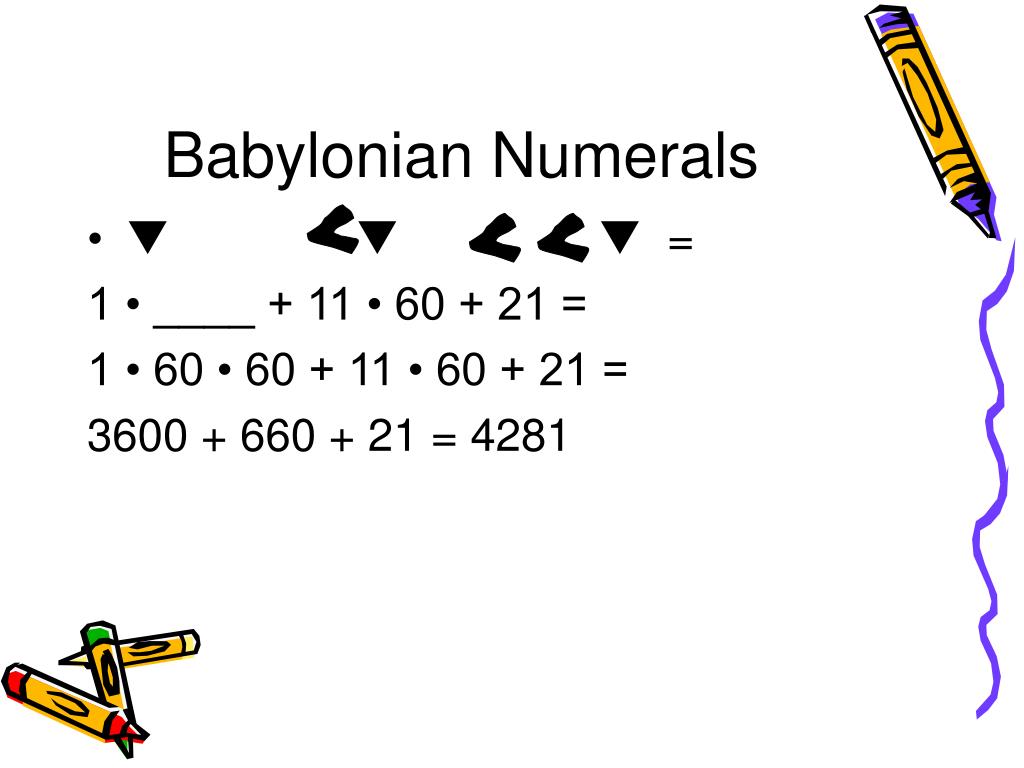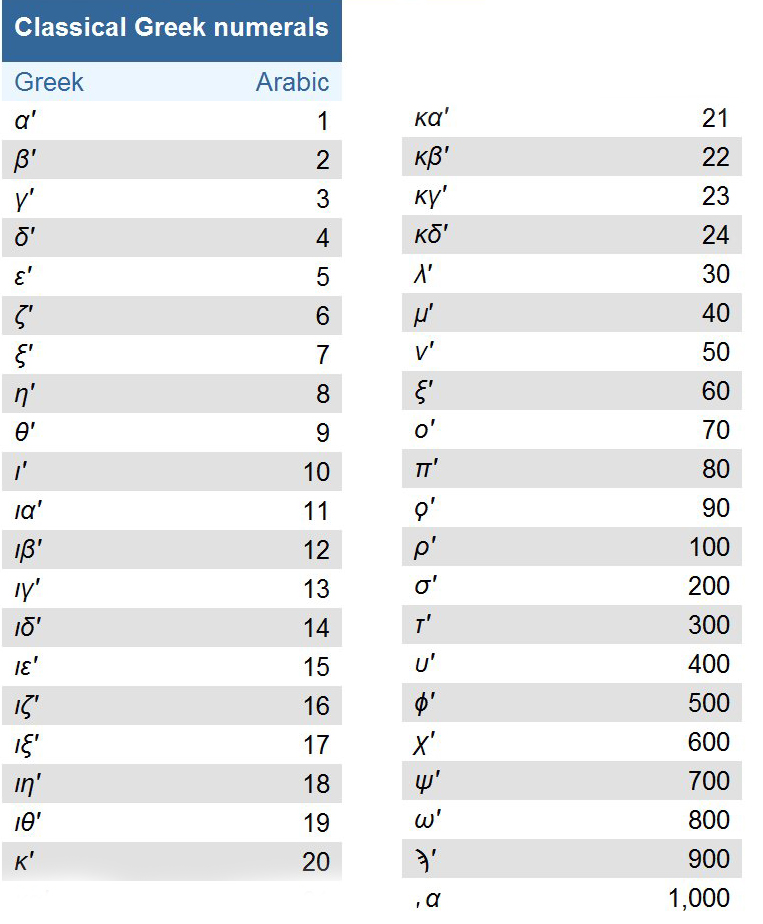
You can also link to intervals, for instance /1-100 or /1980-2020, to see the numbers in a list format. It's also possible to link directly to specific numbers, such as /XXXVII or /37.
#3614 in babylonian numerals converter free#
Roman numerals are often used in numbered lists, on buildings to state the year they were built, and in names of regents, such as Louis XVI of France.įeel free to link to this site if you find it useful. It could be argued that 199 would be more easily written as CIC, but according to the most common definition you can only subtract a number that is one order of magnitude smaller than the numbers you're subtracting from, meaning that IC for 99 is incorrect. In Babylonian system, a four digit number would be represented by 60 x 60 x 60 60 x 60 60 1 216000 3600 60 1 Here is the numbers 647, 3571, and 12345 in Babylonian numerals: To convert 647 from Base 60 to Base 10, make a chart: Similarly, converting 3571 to Base 10, we get: Exercises: 1. 10 + 5 − 1, and 199 is expressed as CXCIX i.e. However, for the numbers 4 and 9, subtraction is used instead of addition, and the smaller number is written in front of the greater number: e.g. Unlike the decimal system where you need to learn 10 symbols, Babylonians only had to learn two symbols to produce their base 60 positional system. These are symbols used to represent these values:įor example, to express the number 737 in roman numerals you write DCCXXXVII, that is 500 + 100 + 100 + 10 + 10 + 10 + 5 + 1 + 1. Babylonians inherited their number system from the Sumerians and from the Akkadians. Unlike our position based system with base 10, the roman system is based on addition (and sometimes subtraction) of seven different values. The Babylonians used a positional number system, which allowed them to represent nearly any number, no matter how large or small. The fact that 1 could indicate one, sixty, thirty-six hundred, or other powers of 60 in the Babylonian number system led to a different way of thinking about division. \babydispĮdit: Version 0.4 of the package allows to typeset numbers beyond 59 (up to 60^9 = 1.0077696 × 10^16 in theory, although I think TeX will give up before that).Roman numerals originate, as the name suggests, from the Ancient Roman empire.


This writing is not standardized but remains comprehensible. Roman numeration does not permit writing large numbers, beyond 9999 the program will display the number of thousands separately. I'm also adjust kerning between tens and units. The program automatically detects whether the number is in Arabic or Roman numerals and makes the conversion/translation. Also, 20 seems to be missing while 30 is mapped several times for some reason, so I'm doing 20 with 2 "10" glyphs and a bit of kerning. It originated with the ancient Sumerians in the 3rd millennium BC, was passed down to the ancient Babylonians, and is still usedin a modified formfor measuring time, angles, and geographic coordinates. Babylonia was another famous ancient civilization that used their own numerals.

The given Babylonian numeral can be written as the Hindu-Arabic numeral. Babylonian Numerals Babylonian numerals Hindu-Arabic 1 10 numerals. Note: It turns out that the font doc is wrong (Ah! If they used TeX to generate it.) and 9 is actually mapped at 1240E, quite logically. Sexagesimal, also known as base 60 or sexagenary, 1 is a numeral system with sixty as its base. Transcribed Image Text: Use the table on the right to write the Babylonian numeral as a Hindu-Arabic numeral. Using fontspec with XeTeX or LuaTex and things like \char"1240D, you could easily typeset what you need. Egyptian The Egyptian method for recording quantitities is based on 10 with a symbol for 1, ten, and each successive power of ten. Angle measurement (360 degrees equals a circle) and time measurements (60 seconds equals one minute) are two examples. There is a paleo-babylonian font on this page. The Babylonian sexidecimal system has its influence in our own world today.


 0 kommentar(er)
0 kommentar(er)
